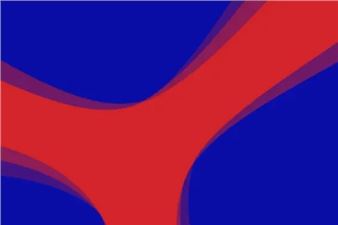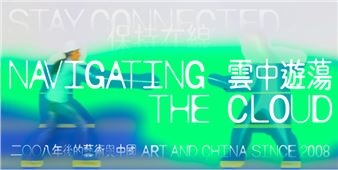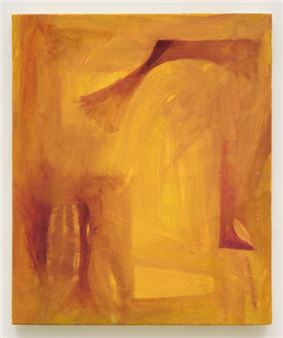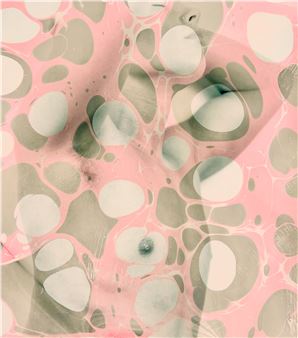Paul Heyer: Paradise
Heyer’s broken window paintings further the artist’s exploration into otherworldly and neo-Surrealist tropes. Morphing into seductive abstractions, the skewed geometry defines the jagged silhouette of broken glass. Color is of this world but also synthetic. There is an animated quality to these works, a flashiness, a juiciness, resulting from Heyer’s refined articulation. He captures qualities of the haunted that we draw from film, video games, and graphic novels. Heyer’s work utilizes everyday forms to move us into a space of suggested possibilities.
A theatrical sense of abandonment, the unknown, the ambiguous; these enigmas toy with our understanding of what is on the other side. We are ostensibly staring into voids as a painted atmosphere holds our attention. There is a quality of breaking through as the paintings slowly free themselves. This mischievous act of breaking offers a kind of liberation for the viewer, passing through into an imaginative, Bardo-like space. When things are broken they are often forgotten. Heyer presents these derelict spaces as sites of potential where there is permission to forgo the rules.
The window is liminal, an opportunity to move between worlds. In painting, the window is a metaphor and a model (at least traditionally) for art and looking. Heyer finds a cheeky way to break but also embrace this. We are viewing seductive thresholds, a sex appeal of the unknown, where borders and boundaries dissipate if we allow ourselves access. Heyer posits luscious absence as its own indulgence. Just as a painting promises infinite possible forms, the viewer themselves can find new meanings within a humble window. As H.D. said in her tribute to Freud, “We are all haunted houses".
Rounding out the exhibition are two paintings of blue apples. The subject is fantastical and escapist but also incredibly normal. The undulating strokes again move us from this place to another. In a more literal way, the apple offers something magical in its tangibility. The subject is forbidden but also inviting; it gestures and lures us into something undisclosed. Heyer engages theater in direct and indirect ways within this exhibition. The paintings are props as much as portals; a duality in which the viewer is constantly caught.

Recommended for you
Heyer’s broken window paintings further the artist’s exploration into otherworldly and neo-Surrealist tropes. Morphing into seductive abstractions, the skewed geometry defines the jagged silhouette of broken glass. Color is of this world but also synthetic. There is an animated quality to these works, a flashiness, a juiciness, resulting from Heyer’s refined articulation. He captures qualities of the haunted that we draw from film, video games, and graphic novels. Heyer’s work utilizes everyday forms to move us into a space of suggested possibilities.
A theatrical sense of abandonment, the unknown, the ambiguous; these enigmas toy with our understanding of what is on the other side. We are ostensibly staring into voids as a painted atmosphere holds our attention. There is a quality of breaking through as the paintings slowly free themselves. This mischievous act of breaking offers a kind of liberation for the viewer, passing through into an imaginative, Bardo-like space. When things are broken they are often forgotten. Heyer presents these derelict spaces as sites of potential where there is permission to forgo the rules.
The window is liminal, an opportunity to move between worlds. In painting, the window is a metaphor and a model (at least traditionally) for art and looking. Heyer finds a cheeky way to break but also embrace this. We are viewing seductive thresholds, a sex appeal of the unknown, where borders and boundaries dissipate if we allow ourselves access. Heyer posits luscious absence as its own indulgence. Just as a painting promises infinite possible forms, the viewer themselves can find new meanings within a humble window. As H.D. said in her tribute to Freud, “We are all haunted houses".
Rounding out the exhibition are two paintings of blue apples. The subject is fantastical and escapist but also incredibly normal. The undulating strokes again move us from this place to another. In a more literal way, the apple offers something magical in its tangibility. The subject is forbidden but also inviting; it gestures and lures us into something undisclosed. Heyer engages theater in direct and indirect ways within this exhibition. The paintings are props as much as portals; a duality in which the viewer is constantly caught.

 ARTISTS
ARTISTS















